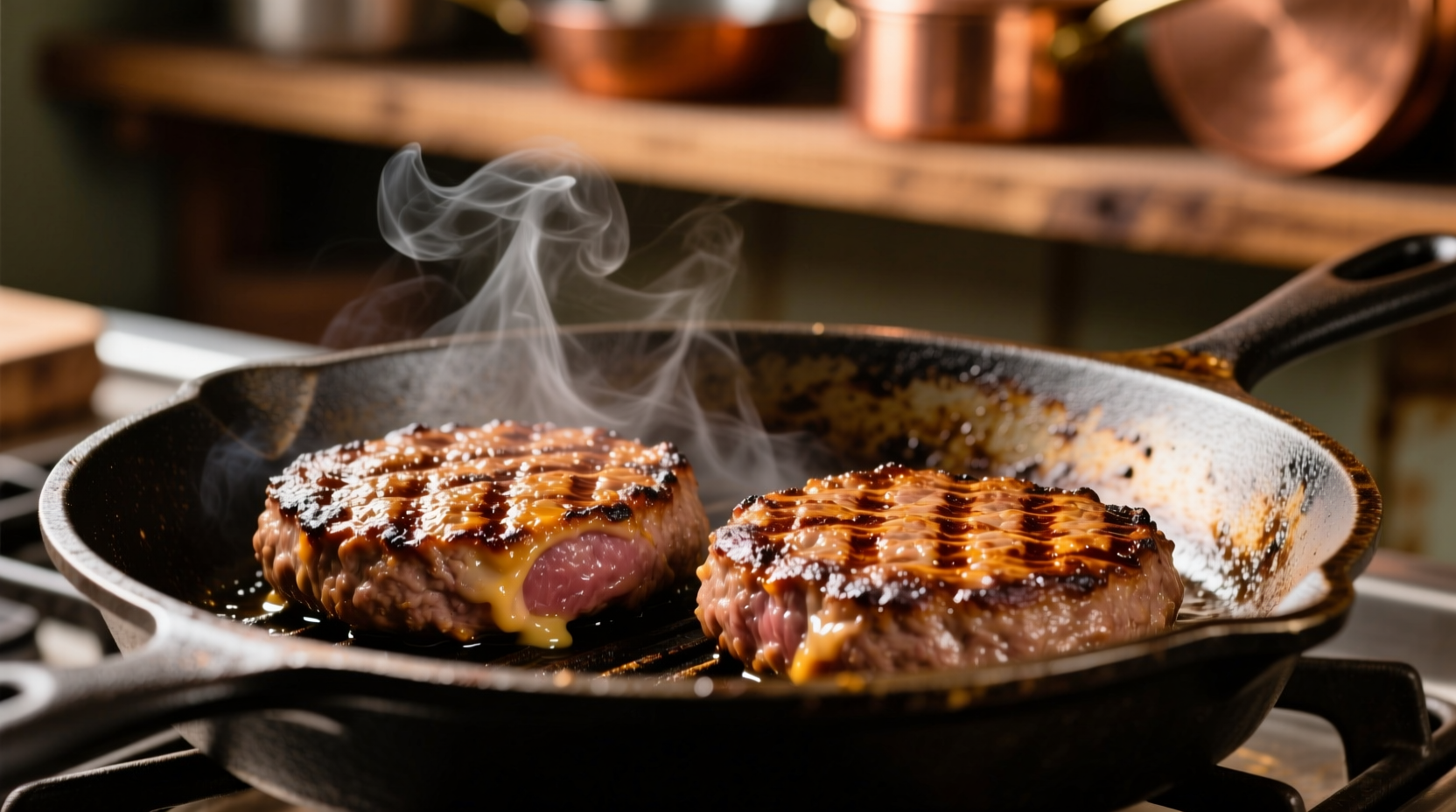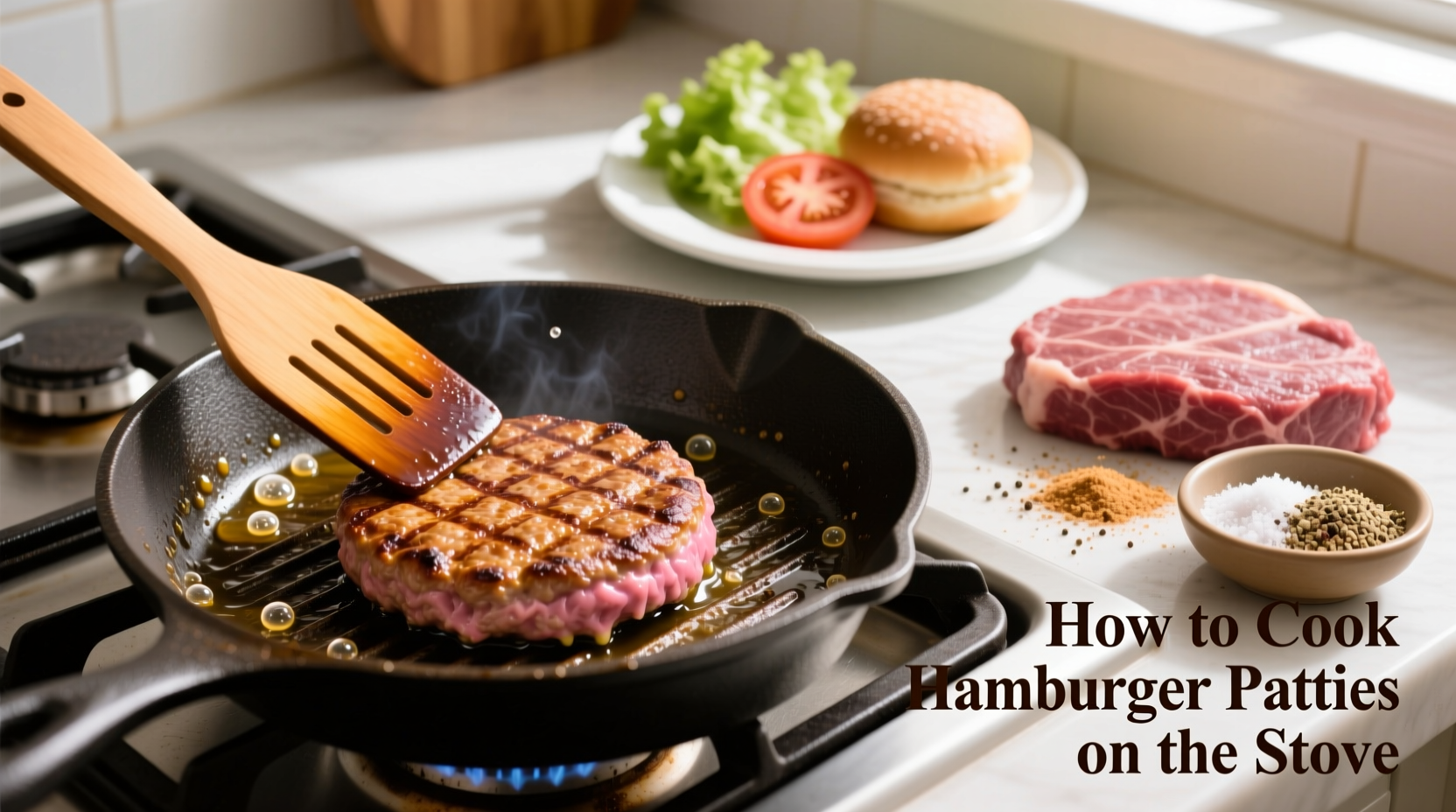Perfectly cook juicy hamburger patties on your stove in 10-15 minutes using medium-high heat (375°F/190°C), flipping once when juices pool on top. Cook 3-4 minutes per side for medium (160°F internal temperature), using a meat thermometer for safety. Always handle raw meat carefully and let patties rest 5 minutes before serving.
Want restaurant-quality burgers without firing up the grill? Cooking hamburger patties on your stove is faster, more convenient, and gives you precise control over the cooking process. As someone who's cooked thousands of burgers in professional kitchens and home settings, I've perfected the stove-top method that delivers juicy, flavorful results every time—no special equipment needed.
Why Stove Cooking Beats Other Methods
While grilling has its place, stove-top cooking offers distinct advantages when perfecting hamburger patties:
- Temperature control - Adjust heat instantly for ideal sear without flare-ups
- All-weather reliability - Cook perfect burgers regardless of rain or cold
- Better moisture retention - Covered cooking options prevent excessive drying
- Faster preparation - Ready in minutes versus waiting for grill preheat
Essential Tools for Perfect Stove-Top Burgers
You don't need fancy equipment, but these items make a significant difference:
- Cast iron or heavy-bottomed stainless steel skillet (provides even heating)
- Instant-read meat thermometer (critical for food safety)
- Flexible metal spatula (for clean flipping)
- Timer (prevents overcooking)
- Meat mallet or flat surface (for consistent patty thickness)
Step-by-Step: Cooking Hamburger Patties on Stove
Preparation Phase: Setting Up for Success
What happens before the patties hit the pan determines your success. Follow these professional kitchen practices:
- Choose the right meat - 80% lean/20% fat ground beef provides optimal juiciness. Avoid "lean" blends which dry out easily.
- Keep everything cold - Chill meat, tools, and even your hands. Warm meat smears and loses structure.
- Form properly - Gently shape 6-8 ounce portions into balls, then flatten to ¾-inch thickness. Create a slight dimple in the center to prevent bulging.
- Salt strategically - Apply ½ teaspoon kosher salt per patty just before cooking. Salting too early draws out moisture.

Cooking Process: The Critical Heat Management
Temperature control separates good burgers from great ones. Follow this precise sequence:
| Cooking Stage | Visual Cues | Time (per side) | Internal Temp |
|---|---|---|---|
| Preheat | Oil shimmers but doesn't smoke | 3-4 minutes | 375°F (190°C) |
| Initial Sear | Deep brown crust forms | 3-4 minutes | 120°F (49°C) |
| Second Side | Juices pool on surface | 3-4 minutes | 160°F (71°C) |
| Resting | Juices redistribute | 5 minutes | Rises 5-10°F |
According to USDA Food Safety guidelines, ground beef must reach 160°F (71°C) internal temperature to eliminate harmful bacteria. Using a digital thermometer is the only reliable method—color alone doesn't indicate doneness.
Avoiding Common Stove-Top Burger Mistakes
Professional kitchens see these errors repeatedly. Here's how to avoid them:
- Pressing patties with spatula - Squeezes out precious juices. Let gravity create the sear.
- Flipping too early - Wait until patties release naturally from the pan (about 3 minutes).
- Crowding the pan - Cook 1-2 patties at a time to maintain proper temperature.
- Skipping the rest period - Cutting too soon releases all juices onto the plate.
When to Cover Your Skillet
Covering creates a specific cooking environment that solves particular problems:
- Use a lid when cooking thicker patties (over 1 inch) to ensure interior cooks without exterior burning
- Never cover during initial sear phase—steam prevents proper browning
- Partial cover (leaving 1-inch gap) works best for melting cheese without overcooking
Perfecting Your Technique: Advanced Tips
Once you've mastered the basics, these professional techniques elevate your burgers:
- Butter basting - After flipping, add 1 tablespoon butter and herbs to the pan, tilting to spoon over patties
- Temperature staging - Start on high for sear, reduce to medium after flipping for even cooking
- Cheese melting - Add cheese during last 60 seconds, cover briefly to melt without overcooking
- Resting surface - Place patties on a wire rack, not a plate, to prevent steaming the bottom crust
Troubleshooting Guide
Encountering issues? Match your problem to these solutions:
- Burnt exterior, raw interior - Heat too high. Reduce to medium after initial sear.
- Patties sticking - Pan not hot enough or insufficient oil. Wait for proper preheat.
- Uneven cooking - Inconsistent patty thickness. Use a burger press for uniformity.
- Dry results - Overcooked or too lean meat. Check temperature and increase fat content.
Food Safety Considerations
Handling ground beef requires special care. Follow these USDA guidelines:
- Keep raw meat refrigerated below 40°F (4°C) until ready to cook
- Wash hands thoroughly before and after handling raw meat
- Clean all surfaces and tools with hot, soapy water after contact with raw meat
- Never partially cook burgers then refrigerate for later finishing
- Consume cooked burgers within 2 hours (1 hour if room temperature exceeds 90°F)











 浙公网安备
33010002000092号
浙公网安备
33010002000092号 浙B2-20120091-4
浙B2-20120091-4